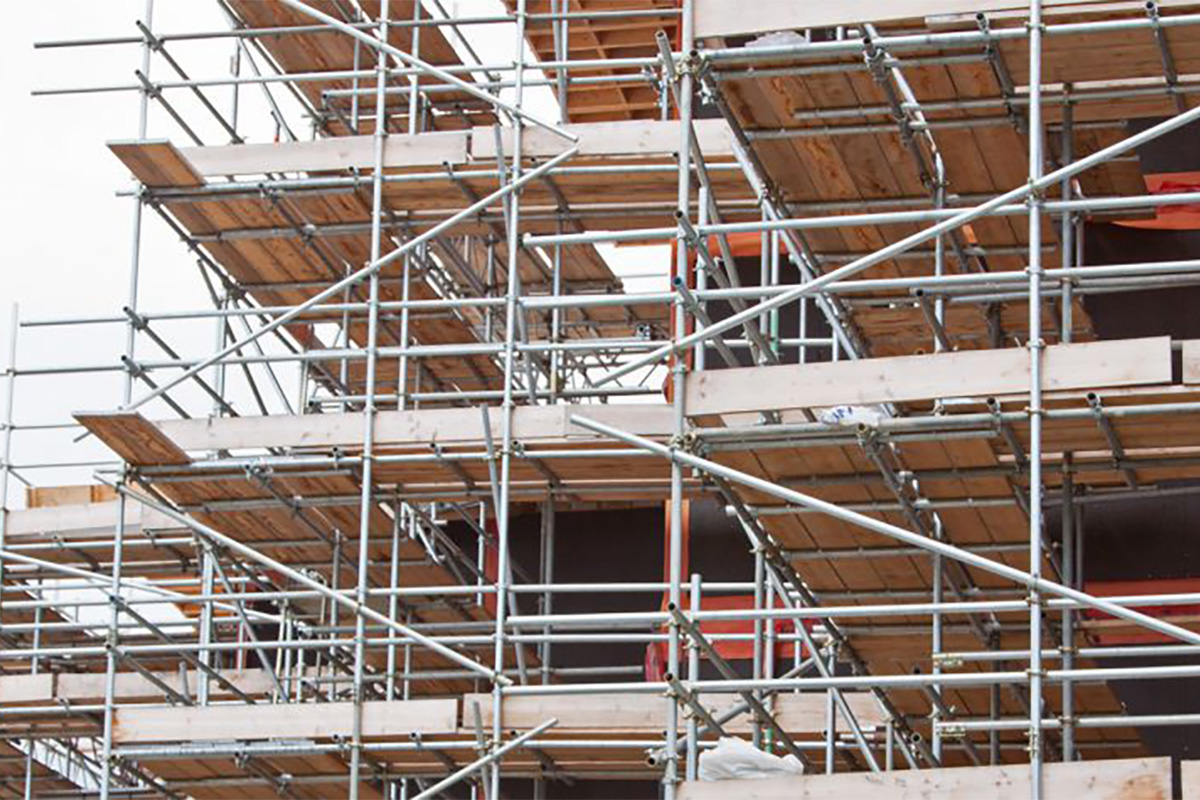Secure and Efficient Scaffolding in Surrey for Any Construction Task
Secure and Efficient Scaffolding in Surrey for Any Construction Task
Blog Article
A Comprehensive Guide to the Crucial Attributes of Scaffolding in Modern Construction
The landscape of contemporary construction progressively depends on effective scaffolding systems that prioritize security, efficiency, and development. As jobs expand in intricacy, comprehending the vital functions of scaffolding ends up being important for making certain employee safety and security and optimizing task timelines. This overview discovers numerous sorts of scaffolding, highlights essential safety functions, and examines product innovations that contribute to efficiency and sustainability. Nevertheless, the effects of these elements expand far beyond simple construction practices, triggering a better look at exactly how they influence overall job success and employee well-being.
Kinds Of Scaffolding
Although scaffolding systems can differ widely in layout and application, they normally come under a number of distinctive groups that satisfy various building and construction requirements - Scaffolding. One of the most typical kinds consist of supported scaffolding, put on hold scaffolding, and rolling scaffolding
Supported scaffolding consists of systems sustained by a structure of posts, which give a steady and elevated functioning surface. This type is typically made use of for tasks that require considerable elevation, such as bricklaying or exterior painting.
Put on hold scaffolding, alternatively, is used for tasks requiring access to high altitudes, such as cleaning or fixing building exteriors. This system hangs from one more framework or a rooftop, enabling employees to reduced or increase the system as required.
Rolling scaffolding features wheels that enable easy wheelchair throughout a task website. It is particularly helpful for tasks that require frequent moving, such as interior job in big areas.
Each sort of scaffolding is developed with particular applications in mind, guaranteeing that building jobs can be executed effectively and properly. Recognizing these categories is vital for picking the appropriate scaffolding system to fulfill both job requirements and website conditions.
Key Safety Features
Safety and security is vital in scaffolding systems, as the possible risks connected with working at elevations can cause serious mishaps if not appropriately handled. Key safety features are crucial to make sure the wellness of workers and the honesty of the building site.
Most importantly, guardrails are crucial. These obstacles provide a physical secure versus falls, significantly decreasing the risk of serious injuries. Additionally, toe boards are frequently used to stop tools and products from diminishing the scaffold, protecting workers below.
Another essential element is using non-slip surfaces on platforms. This function boosts hold, particularly in unfavorable weather problems, thereby decreasing the chance of slides and drops. Furthermore, gain access to ladders need to be firmly positioned to help with secure access and leave from the scaffold.
Normal evaluations and maintenance of scaffolding systems are also important. These examinations make sure that all elements remain in great problem and working correctly, dealing with any type of wear or damage without delay.
Last but not least, proper training for all workers associated with scaffolding procedures is important to make certain that they recognize safety and security methods and can determine potential threats. Scaffolding. Collectively, these attributes create a safer working environment and dramatically reduce dangers connected with scaffolding
Material Advancements
Developments in product scientific research have substantially influenced the scaffolding market, boosting both safety and performance in modern-day building and construction. The introduction of high-strength steel and aluminum alloys has actually changed typical scaffolding systems. These materials are not just lighter, making them easier to carry and construct, however likewise supply premium load-bearing abilities. This leads to scaffolding frameworks that can sustain higher weights while reducing the threat of collapse.
Furthermore, ingenious composite products, such as fiberglass-reinforced plastics, have become viable choices. These products are immune to corrosion and environmental degradation, thus expanding the lifespan of scaffolding systems, particularly in severe climate condition. Making use of such materials adds to reduce upkeep expenses and guarantees constant efficiency gradually.


Style Factors To Consider
Thinking about the intricacies of modern building and construction jobs, effective scaffolding design is extremely important to guaranteeing both performance and security. Style considerations need to include numerous aspects, consisting of load capability, height, and the certain requirements of the building website. Each project provides special obstacles, requiring a versatile method to scaffolding systems that can adjust to differing conditions.
Structural honesty is critical; as a result, engineers must calculate the lots that the scaffolding will sustain, consisting of employees, products, and equipment. The option of materials plays an essential duty in ensuring the scaffolding can withstand these tons while remaining resilient and lightweight. Furthermore, the layout has to allow for simple accessibility and egress, helping find more with the smooth movement of materials and employees.
Security attributes, such as guardrails and non-slip surface areas, should be included to minimize dangers of accidents. In addition, the layout must consider the surrounding atmosphere, consisting of adjacent structures and possible risks. By attending to these layout factors to consider, building and construction companies can enhance the effectiveness of scaffolding systems and promote a much safer working atmosphere, eventually adding to the general success of the job.
Upkeep and Assessments
The effectiveness of scaffolding systems prolongs beyond first design and application; ongoing upkeep and routine examinations are crucial to ensuring their continued performance and safety throughout the duration of a job. Routine examinations must be carried out by certified employees to determine any type of signs of wear, damage, or instability that can jeopardize the integrity of the scaffolding.
Upkeep methods ought to consist of routine checks of structural components, such as frames, slabs, and fittings, making sure that all aspects stay complimentary and protected from deterioration or other wear and tear. Furthermore, the performance of safety functions, such as guardrails and toe boards, must be analyzed to ensure conformity with security regulations.
Paperwork of all assessments and upkeep tasks is important for liability and regulative conformity. A systematic approach to record-keeping not only help in tracking the condition of the scaffolding however also supplies essential evidence in case of a case.
Ultimately, establishing a thorough maintenance and examination schedule will substantially minimize the danger of crashes and boost the total safety of the building website. By prioritizing these methods, building and construction supervisors can guard employees and maintain the project's honesty.

Final Thought
In verdict, the necessary attributes of scaffolding in modern-day construction incorporate a variety of essential elements, consisting of diverse types, essential safety devices, material innovations, and thoughtful layout factors to consider. Stressing security through guardrails and non-slip surface discover here areas, along with innovations in products like high-strength steel, enhances both efficiency and sustainability. In addition, normal upkeep and assessments are important for ensuring structural stability and safety on construction websites, eventually facilitating effective task execution and promoting the wellness of employees.
The landscape of modern construction significantly counts on efficient scaffolding systems that prioritize performance, technology, and security.Developments in product science have dramatically influenced the scaffolding industry, enhancing both safety and efficiency in modern-day building and construction. In general, these material technologies not only boost the efficiency and safety and security of scaffolding systems yet likewise line up with the industry's push towards sustainability, as several modern-day materials are designed to be a lot more eco friendly.
Taking into consideration the intricacies of modern-day construction projects, reliable scaffolding layout is paramount to making certain both performance and security.In conclusion, the necessary attributes of scaffolding in modern-day over here construction encompass a range of vital components, including varied kinds, key safety devices, product advancements, and thoughtful style factors to consider.
Report this page